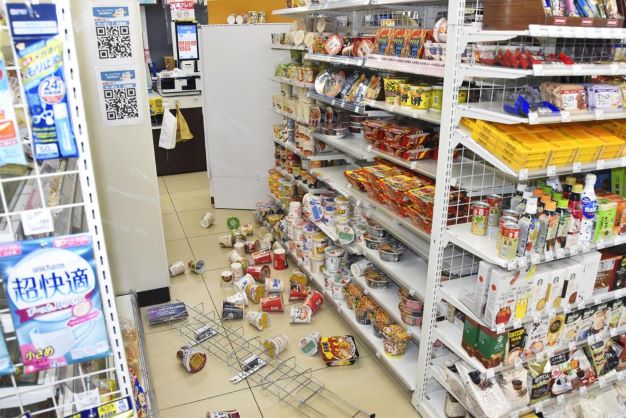7.3-magnitude quake hits east Japan, tsunami advisory issued
By Natsuko Fukue and Tomohiro
TOKYO – A powerful 7.3-magnitude quake jolted eastern Japan on Wednesday (16) night, rattling the capital Tokyo and prompting a tsunami advisory for parts of the northeast coast, the Japan Meteorological Agency said.
The quake, which cut power to more than two million households, was centred off the coast of the Fukushima region at a depth of 60 kilometres (37 miles).
Shortly after it hit at 11:36 p.m. (1436 GMT) an advisory for tsunami waves of one metre was issued for the coasts of northeastern Fukushima and Miyagi regions.
Japan’s nuclear authority said no abnormalities were detected at the stricken Fukushima plant that went into meltdown 11 years ago after a huge 9.0-magnitude quake off the eastern coast on March 11, 2011, triggering a deadly tsunami and nuclear disaster.
A 20 centimetre tsunami wave was recorded in Ishinomaki in Miyagi prefecture, according to public broadcaster NHK, which showed images of some structural damage in Fukushima.
“Calls have been inundating police and ambulances in Fukushima and Miyagi,” top government spokesman Hirokazu Matsuno told reporters. “We’re doing our best to assess the extent of the damage.”
Matsuno said an emergency government taskforce had been set up and warned residents of possible strong aftershocks over the next week.
“Major aftershocks often happen a couple of days after the first quake, so please stay away from any collapsed buildings … and other high-risk places,” he said.
At least two million households were left without power in the central Kanto region, including 700,000 in Tokyo, electricity provider TEPCO said.
In the northeast, 156,000 households had no power, regional energy company Tohoku Electric Power said.
Prime Minister Fumio Kishida told reporters the government was gathering information on the situation.
“We will commit ourselves to gathering information, do our best to rescue those affected by the (quake) and communicate information appropriately,” he said.
Regional train company JR East said it was experiencing significant disruption to its operations.
Japan sits on the Pacific ‘Ring of Fire’, an arc of intense seismic activity that stretches through Southeast Asia and across the Pacific basin.
The country is regularly hit by quakes, and has strict construction regulations intended to ensure buildings can withstand strong tremors.
But it remains haunted by the memory of the 2011 undersea quake in northeastern Japan that triggered a deadly tsunami and unleashed the Fukushima nuclear accident.
A minute’s silence was held on Friday (11), the anniversary of the disaster, to remember the some 18,500 people left dead or missing in the tsunami.
Around the stricken Fukushima plant, extensive decontamination has been carried out, and this year five former residents of Futaba, the region’s last uninhabited town, returned to live there on a trial basis.
Around 12% of Fukushima was once declared unsafe but no-go zones now cover just 2.4 percent of the prefecture, although populations in many towns remain far lower than before.
– Agence France-Presse


